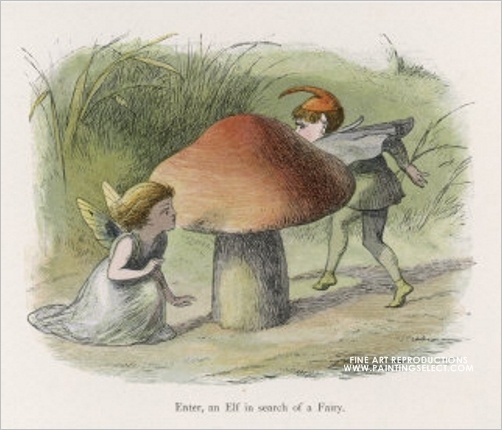
Disclaimer: In the movie Bayala, Eyela is called an elf. But according to the definition, she is a fairy. Therefore when referring to Eyela she will be addressed as an elf, but when talking about the history of her kind there will also be many mentions of fairies.
---
Fairies, Fae, Elves… In popular media and culture as well as in traditional literature, these terms are used to describe any kind of supernatural magical beings. But where exactly is the difference between these depictions and what specific characteristics are assigned to these?
First of all, Fae is either related to the French word faer which means to enchant or to the Latin word fata which means fate. Fae was first used in French in the 12th century and refers to various types of magical beings (Cant, 2024). One type of the Fae is a faerie or fairy. The word fearie was influences by the Peris, angelic beings in Persian mythology. Fairy refers to playful creatures that enjoy tricking children. It has its roots in the medieval Frankish and Bretonic romances. In modern literature they are depicted as miniature humanoid beings (Cant, 2024). But fairies have not always been described as beautiful and friendly pleasant creatures. They were originally associated with evil beings that trap humans when they step into their magical lands (Talk, 2022).
Today, there are many forms in which fairies can exist. In most stories, they can change appearance. They can appear as a dot of light or in a more humanoid shape. Fairy types are tied to different parts of nature, such as garden fairies, youth or lavender fairies (Cant, 2024; Talk, 2022). The most obvious characteristic of fairies are their wings. This is also the main difference between them and elves. Fairies can fly and have god-like powers (Talk, 2022). They are mostly genderless, but they can decide whether they rather identify with masculine or feminine gender. Faries can give enchantments and gifts to help humans, but there are also evil fairies who want to harm or hurt them (Cant, 2024; Talk, 2022).
Elves are of a different magical kind. They are originated in Norse mythology with Germanic roots. Elves are divided into dark and light elves (Cant, 2024; Talk, 2022). They are older than humans and therefore famous for being the wisest and most beautiful creatures. In the 1500s, they were depicted as small creatures that steal human babies and cause nightmares. J.R.R. Tolkien redefined elves in his work, adding new elements to existing depictions. His words painted them tall with exceptional beauty. Male and female elves had equal strength and wisdom as well as superior senses and pointed ears (Cant, 2024).
Elves exist in all types of skin colour: white, gold, silver, black, brown, red, blue and green. They do not discriminate on bass of skin colour and gender. Regarding their clothes, they dress according to their kind, for instance, forest elves dress in green to imitate nature. Elves can be alchemists, wizards, healers and many other kinds of these. Usually, elves do not like human contact. They rather talk to animals and plants (Talk, 2022).

So, all in all, fairies and elves are historically two different supernatural beings. It is important, to not mix up these terms. Unfortunately, this happens a lot in modern literature or pop culture. Sometimes, creatures that obviously appear as fairies, are named elves. But elves cannot fly, they are older than humans and do not want any human contact, whereas fairies are more curious about us. They can interfere in human lives or help us, if we let them and if we are kind to nature. Sometimes elf is used as a term for a male fairy. But that is wrong per definition, as elves are a different magical kind. The appearance of fairies today is always an individual part of the story that relies on it. But the pointed ears and wings will always reveal a creature as a fairy. And moreover, fairies representing different parts of nature is a common storyline, for instance Tinkerbell or even the world of Bayala, where our Eyela comes from.